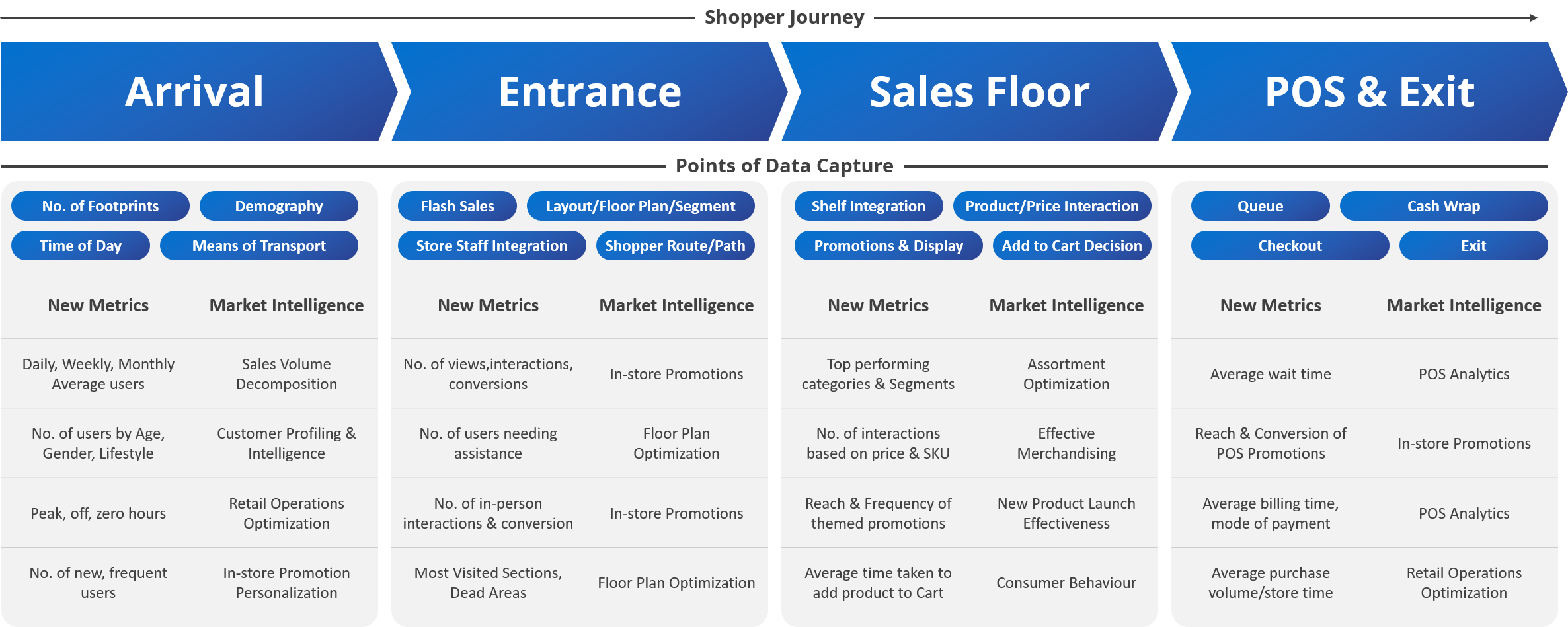Table of Contents
1
Introduction
2
5G Overview
3
Current State of Retail Analytics
4
5G’s Impact on Retail Analytics & Opportunities
7
Adoption Approach
8
About Innova Solutions
9
Partnerships
10
References
Introduction
Introduction
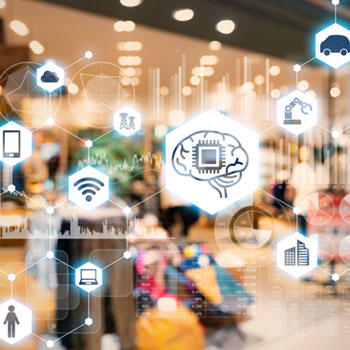
The upcoming 5G wireless technology will bring numerous opportunities and sweeping disruptions, especially in the use of analytics and AI. Technology companies around the world have been making rapid strides in the 5G space and investing in its potential to be the next big technology revolution.
Alongside the consumer market, CSPs are increasingly aiming for 5G enterprise services. Industries and equipment vendors have earmarked private networks for industrial users as a market segment with significant potential. As Telcos and other industries prepare for the transition to 5G, it is apparent that real-time data processing and analytics are crucial for organizations across industries looking to capitalize on the promise of 5G.
The Data Analytics market is predominantly driven by the rising adoption of IoT, Wi-Fi, and RFID tags and extensive integration of advanced technologies such as cloud-based analytics for decision-making. 5G has the potential to augment each of these technologies and create opportunities for new kinds of data and insights.
The COVID-19 pandemic has had a profound impact on consumer behavior and, by extension, on the dynamics of the retail industry. The ability to track customer behavior and predict/manage demand across digital and in-store channels has become more important than ever before. Retailers & Market Intelligence players who are able to aggregate data from multiple channels will be the biggest beneficiaries in the coming years.
In this whitepaper, we discuss what 5G is, how it can transform retail analytics, and talk about the emergence of new data channels and their use cases in retail. Next, we take a deep dive into one of the use cases and explore the end-to-end architecture and state of technology. Finally, we suggest an adoption approach for players in the retail ecosystem who are looking forward to investing in 5G.
5G Overview
5G Overview
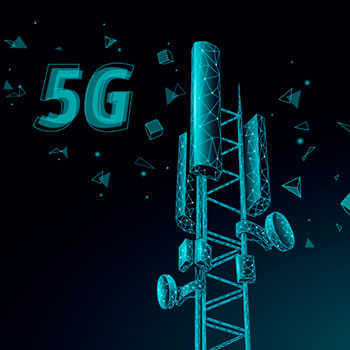
5G stands for 5th Generation. In the early 1990s, 1G technology made it possible for the earliest brick-sized mobile phones to make phone calls. Then 2G technology stepped up the game by adding the texting feature. 3G allowed for multi-tasking – calling, texting, and web browsing capabilities and 4G fine-tuned it so you could do it all faster and smoother.
5G Specs and Comparison with 4G
There are three types of 5G networks – millimeter-wave, mid-band, and low-band.
Millimeter-wave are short-range waves ranging from 24-47 GHz frequency. They are the fastest but can be blocked by trees and buildings. Mid-band includes frequency bands ranging from 2.5 GHz to 4.2 GHz and is the most widely deployed form of 5G. It offers a good compromise between range, speed, and reliability. Low-band uses 600 MHz to 900 MHz bands and have relatively lower speeds but are well suited for reaching rural areas and for IoT devices that need reliability rather than large or rapid transfers.
The following table shows the comparison of 4G (IMT- Advanced) and 5G (IMT-2020) – the international specifications and benchmarks as set by the International Telecommunication Union (ITU) and partners for all the mobile-broadband communication adopters.
Current State of Retail Analytics & Opportunities
Current State of
Retail Analytics & Opportunities
According to Alteryx and Retailwire study of nearly 350 retailers and brand manufacturers, only 16% consider themselves experts when it comes to data harnessing, while 24% and 60%, respectively, describe themselves as “newbies” and “getting there.” In order to understand why retailers are not able to harness the data to its full potential, let us analyze the current state of retail analytics as well as the gaps and limitations in the existing processes.
Limited Device Connectivity
Limited Access to Real-time Data
Limited Access to High Performance Compute Capacity
5G’s Impact on Retail Analytics
5G’s Impact on Retail Analytics
From facilitating extensive visibility of inventory, stocks, and consumption patterns to enabling unified shopping and checkout experiences, 5G enables the closure of these gaps and brings data & analytics to the forefront of Retail transformation. Below is a list of four key features of 5G that would be instrumental in driving transformation in Retail & Analytics.
Connected Devices
Throughput & Latency
Data Volume
Multi-access Edge
The Emergence of New Data Channels & Use Cases
The Emergence of New Data Channels & Use Cases
5G allows a true 360-degree view of retail transactions. It opens up multiple use cases that use data & analytics to improve customer experience and operational efficiency, and in turn, drive ROI. Some of the 5G enabled data channels, and use cases that can potentially transform the retail industry and attracting investments around the globe are:
- AI Camera Analytics
- Augmented Reality & Virtual Reality
- Smart Checkout
- IoT (Robot) Scanning
- Smart Store
- Smart Home
Let us take a more in-depth look into each of these.
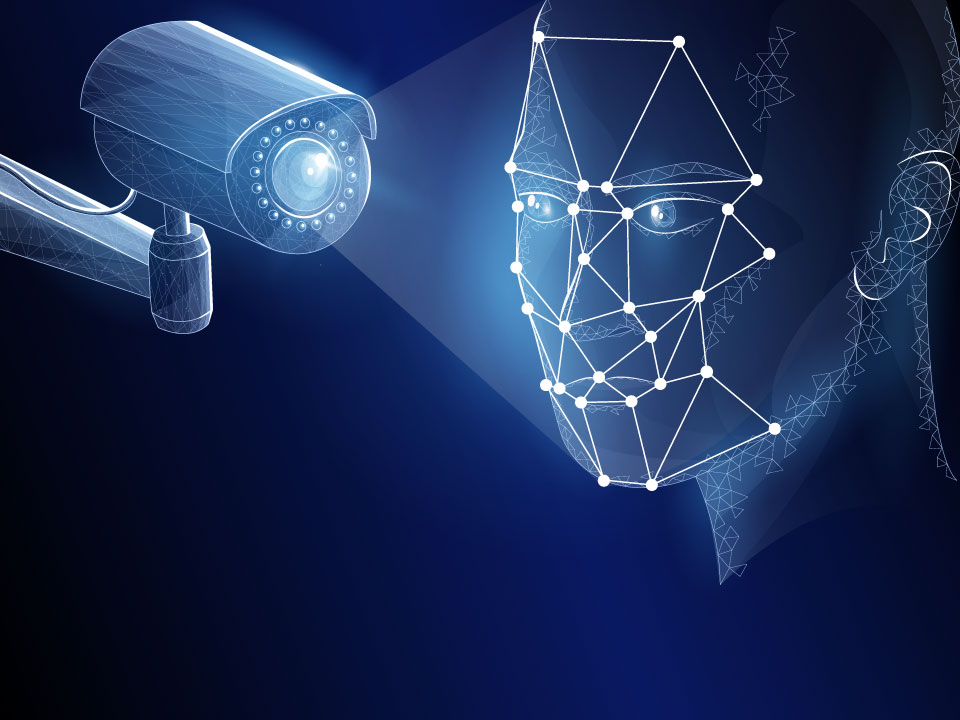
AI Camera Analytics
Store security cameras can now act as a data channel to capture a live video stream of shopper’s activity in the store and generate real-time shopper behavior insights. With 5G and Edge computing in place, cameras – static and AI – can generate real-time store insights and offerings such as:
- Store footfall, ability to compare data, and capture demography of shoppers along with peak/off-hours data.
- Shopper behavior, interests, and motivations.
- Attraction metrics of displays/advertisements, new product launch traction, and merchandising insights.
- In-store promotion insights such as reach & frequency, and enabling personalized deals and offers.
- Floor plan optimization that considers popular routes, dead areas, and best-performing products and locations in a store.
- Streamlined operations and reduced shrinkages with identified bottlenecks and suspicious behavior.
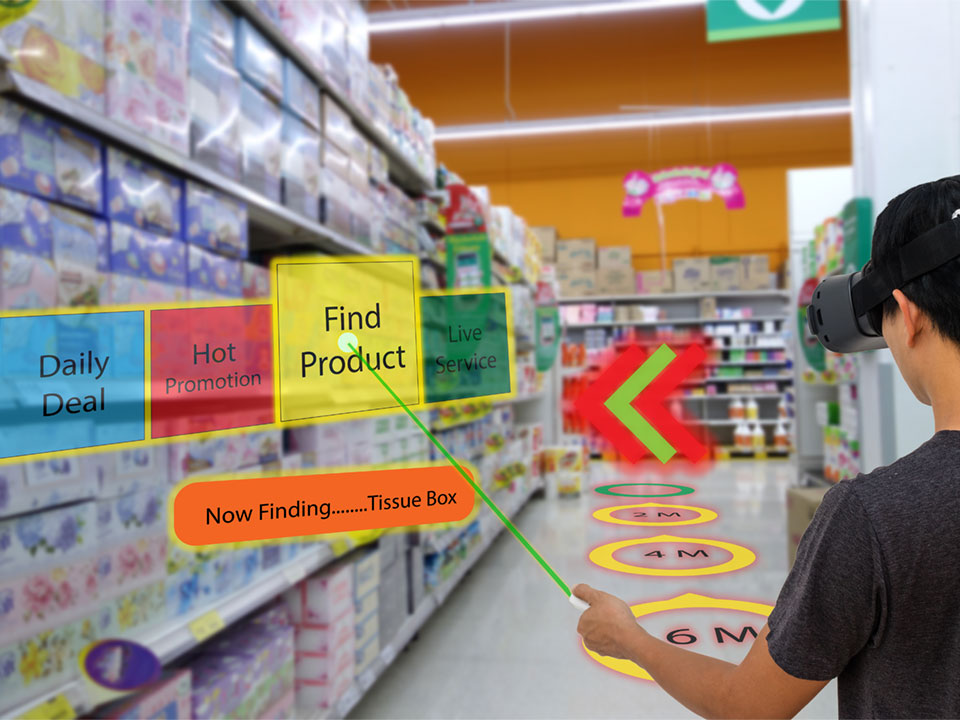
Augmented Reality & Virtual Reality
One of the key advantages of 5G is the ability to process audio and video streams with near-zero latency and thus enabling AR/VR applications to proliferate. AR/VR has multiple applications in retail, from data collection for market intelligence to customer experience and operational efficiency.
Some examples are:
- Real-time product interaction insights with AR-based magic mirrors.
- Store planning with visualizations and customizations
– In a virtual environment.
– With information overlaid on real-life. - Virtual store plan validation from shoppers and business stakeholders.
- AR-based interactive simulations to train auditors and 3rd party data providers/store workers on how to capture images and collect data for store audits.
- AR-based store audits with real-time audit instructions and the use of image data and historical planogram data to identify discrepancies.
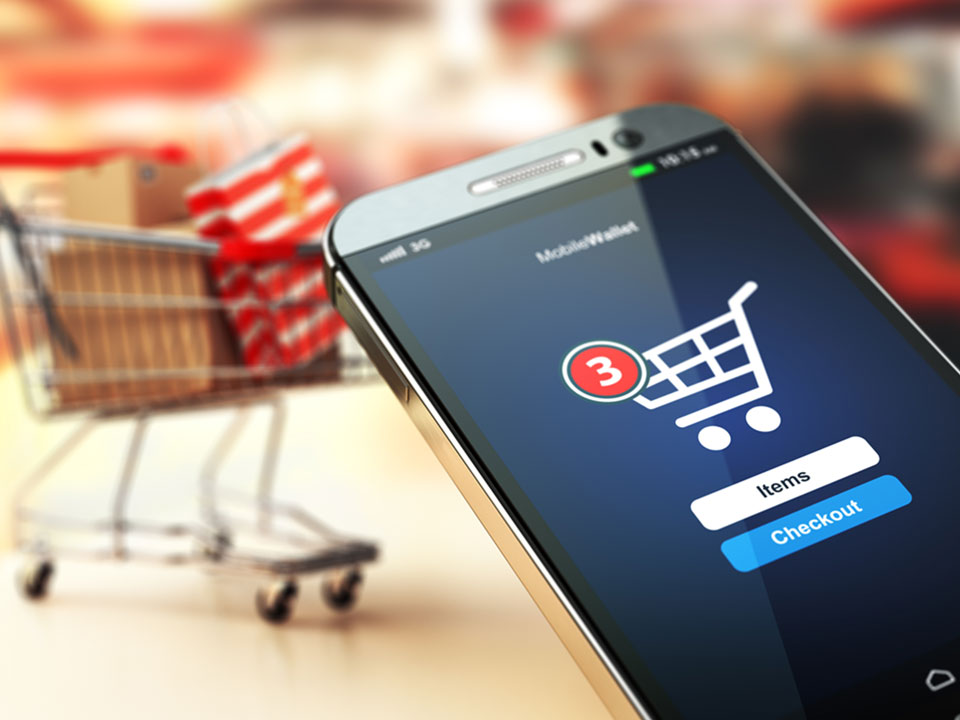
Smart Checkout
For many years now, checkout has remained the biggest bottleneck in brick-and-mortar retail stores. 5G enables multiple checkout solutions with real-time data collection for retailers to overcome these challenges:
- Separation of hardware and software components of POS and efficient POS scaling with Edge computing.
- Use of mobile POS tablets for checkout anywhere in the store.
- Mobile self-checkout apps with:
– Virtual cart
– NFC-based payments
– Item/map locator enabling e-commerce level insights into purchase patterns and real-time product recommendations - ‘Just walk out’ technology with credit card-based store entry, customer authentication, and auto payments.
- Virtual assistance with out-of-store query addressal, online orders & pay/pick up at the store.
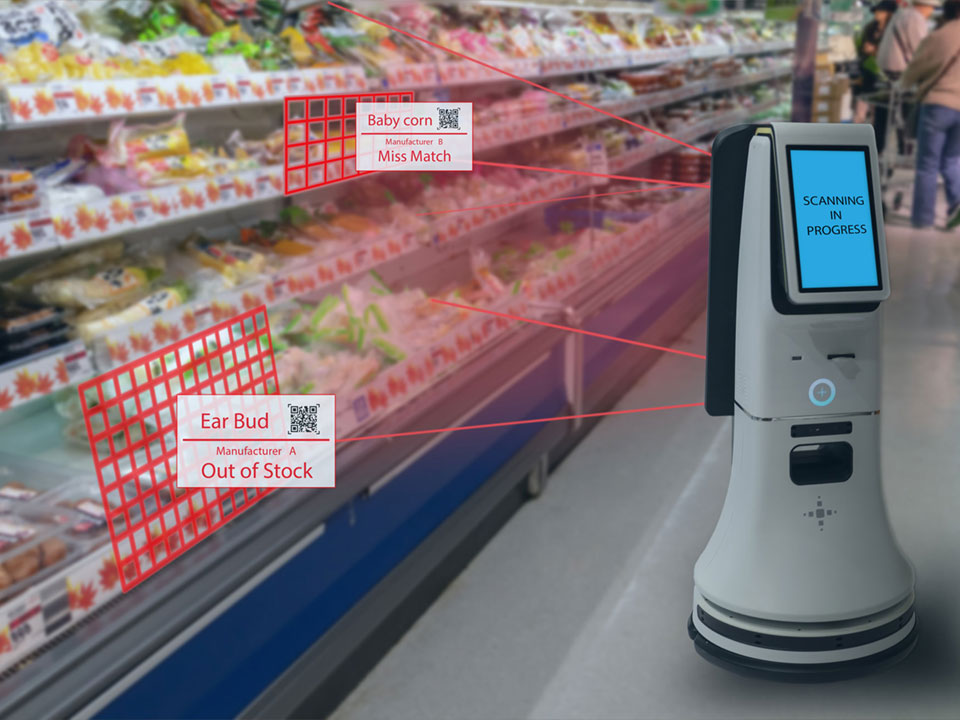
IoT (Robot) Scanning
Robotics, AI, and RFID combined enable retail analytics solutions that can capture real-time inventory, placement, and consumption data in the store. Retailers can leverage shelf analytics for:
- Fully autonomous and accurate shelf tracking with zero human intervention.
- Continuous monitoring of planogram compliance and addressing the wrong spot, gap fill & shrinkage issues.
- Identify out-of-stock patterns and inventory trends and trigger restocking alerts prior to the occurrence.
- Efficient merchandising with price checks and wrong SKU location identification.
- Effective store promotions with identification of hot spots and obsolete promo tags.
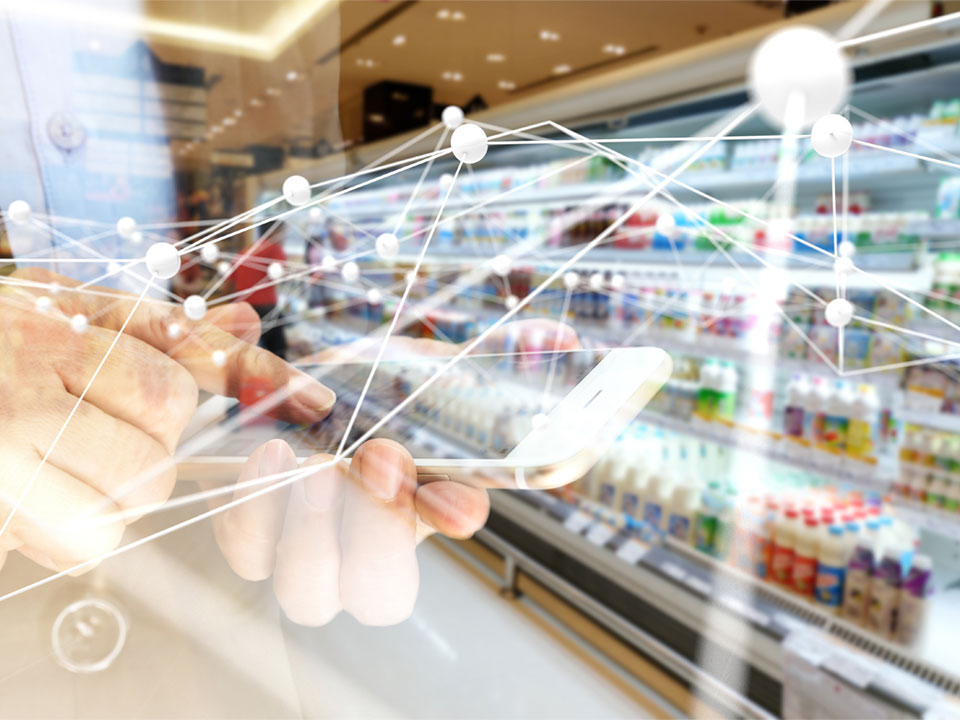
Smart Store
Amazon Go store is a classic example of a fully autonomous retail outlet. It combines several technologies like IoT, AI, and Cloud POS to track item selection efficiently and bill customers. All these technologies combined require immense data processing capabilities and that too near the edge to alert critical scenarios in real-time. 5G and Edge computing provide the necessary infrastructure to scale up this concept effectively.
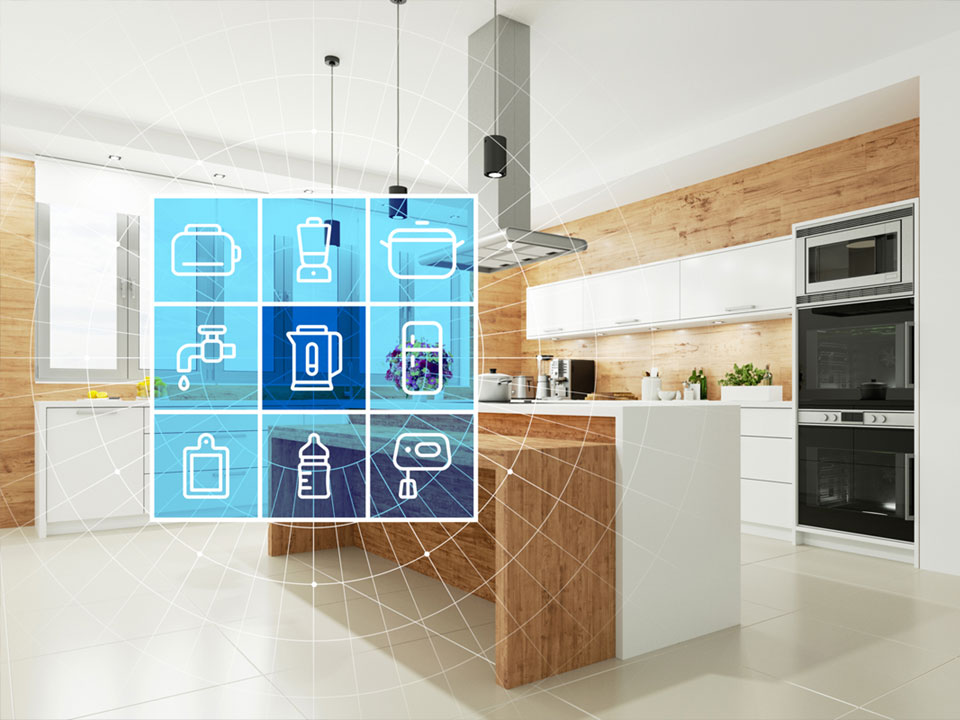
Smart Home
Smart Home refers to intelligent gadgets and appliances at home that gather real-time information on customer decision-making and consumption patterns and brings retail & analytics at the doorstep of the customer. Examples include smart speakers, smart wearables, smart refrigerators, and energy meters. 5G is going to enable progressively intelligent home solutions with IoT sensors & processing.
5G Deep Dive – How it works
5G Deep Dive – How it works
When we talk about 5G, different factors in the 5G ecosystem come into play that are essential to make the technology use case a success. Thus, evaluating the current state of these factors becomes vital in the creation of an effective adoption strategy.
In this deep dive, we take the case of AI Camera analytics for shopper insights, explain its functioning and impact, and show how different technology elements in the 5G ecosystem come together to create a comprehensive solution.
Use Case Elaboration – AI Camera Analytics for Real-time Shopper Insights
These cameras will represent 70% of the 5G IoT endpoint installed base in 2020, before contracting to 32% by the end of 2023. Let us explore this data channel and use case & take the shopper journey to analyze the new insights and business opportunities for retailers.
Shopper Journey & Points of Data Capture
A typical shopper journey in the retail store involves arrival, entrance, activity on the sales floor, checkout & exit. With the help of store cameras and computer vision for analytics, each step of the user journey presents various points of data capture for generating metrics and insights.
Store cameras present outdoors can capture the live video streams of all the customers arriving at the store, along with the time of arrival and transport used. With the help of computer vision, we can analyze these streams to detect people, count and demography at any interval of time. Similarly, store cameras present inside the store can capture product interaction, route maps & checkouts data, which can be used to generate metrics such as popular/dead areas, reach & frequency of in-store promotions. These real-time insights can also act as new dimensions to broader market intelligence, such as sales volume decomposition, in-store promotion personalization, and retail operations optimization.
Metrics & Insights
The following image illustrates how we can generate metrics on each step of the shopper journey with Camera Analytics and align those with broader market intelligence insights.
State of Technology
The key components of any 5G solution architecture are:
- Endpoint Devices & IoT Gateways
- 5G Network & Connectivity
- Edge Computing Zones
- Edge-enabled AI/ML Services
While these components are at different levels of readiness for commercial adoption, let us examine the state of technology for AI Camera Analytics use case.
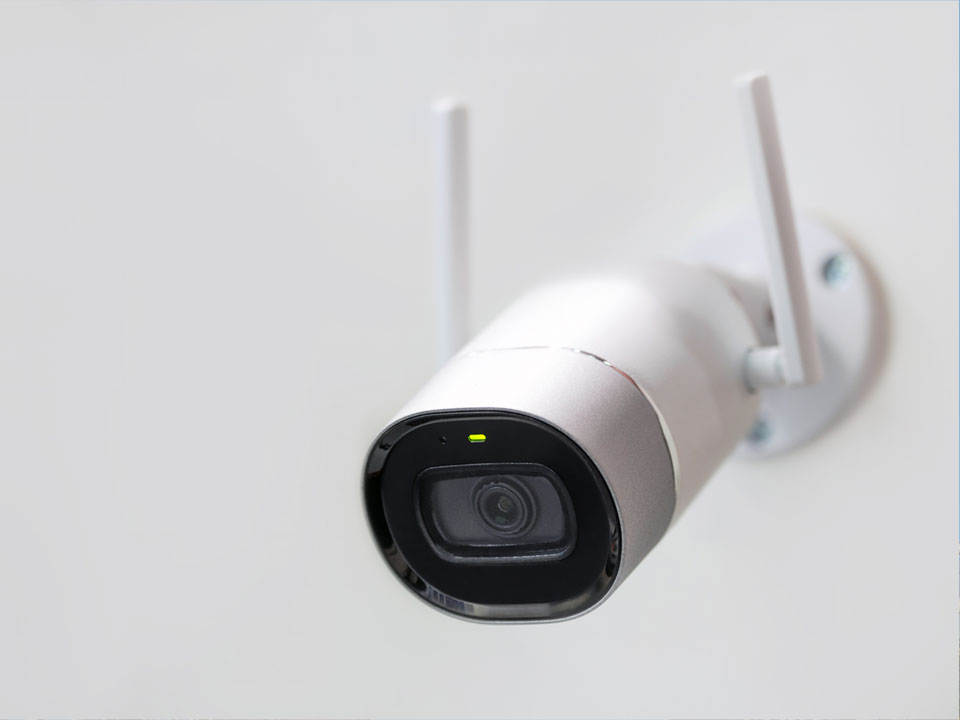
Endpoint Devices and IoT Gateways
Endpoint devices and IoT Gateways are initial points of data collection in the 5G ecosystem. For our use case, intelligent cameras serve as endpoint devices. Since these cameras can run 24/7 and generate huge streams of data, not all of the data may be useful. Many players are designing intelligent solutions to pre-process the raw information locally and to forward only the meaningful data to their data centers.
Some of the cameras now come equipped with their own storage and compute capabilities that can run the latency-critical jobs such as intrusion detection locally to avoid any delay in alerts. For IoT devices without their own storage and compute, IoT gateways serve as pre-processing points to filter out the data to be sent forward. These gateways also help in local machine-to-machine communication.
The current state of technology:
- Wireless security cameras with 5GHz and 2.4 GHz dual support available in the market.
- 5G-enabled IoT Gateways that can operate on both sub-6Ghz and MM wave spectrum are being developed by multiple industry leaders, including Intel and VVDN.
- Intelligent edge device solutions like Vision AI DevKit by Microsoft & Qualcomm can perform inferences and run containerized cloud services locally in the device. They provide integrated device SDKs for custom code deployments and help perform local data processing for latency-critical IoT and media service workloads.
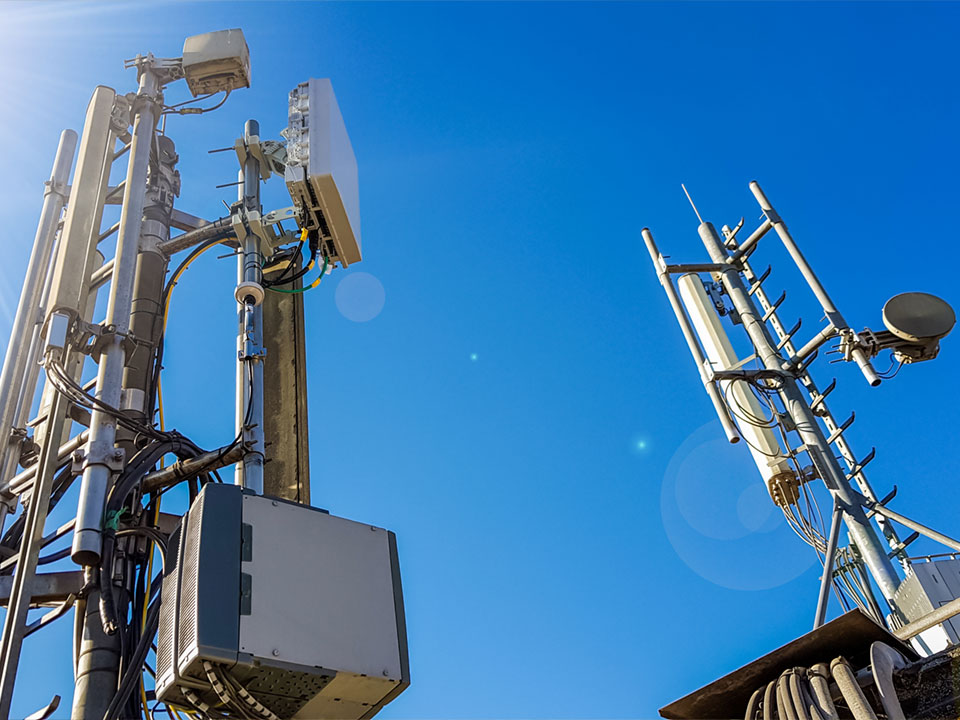
5G Network & Connectivity
5G network and connectivity is a crucial component of the ecosystem that helps in carrying data to cloud services centers faster. This wireless high-frequency medium helps in carrying the data across in huge volumes with less than one millisecond latency. However, since the 5G spectrum uses high-frequency waves that are prone to be blocked by obstacles, it requires additional infrastructure and closely placed cell towers and is more suitable for high volume communications in densely populated areas.
Telecom operators and wireless communication players are developing multiple technologies such as MM Wave, Small cells, Massive MIMO, Beamforming, Full Duplex, etc. in order to cater to different 5G use case scenarios. Low power small cell towers placed closer to each other than traditional high power towers are well suited for a use case like AI Camera Analytics in Retail Store.
The current state of technology:
- Carriers-driven with 79 operators across 39 markets are announcing rollout plans. 24 markets went live by May 2020.
- 48% 5G coverage in North America, 34% in Europe and 50% in developed Asia by 2025.
- By 2023, 5G will make up at least one-fifth of all mobile data traffic, and subscription uptake is estimated to reach one billion.
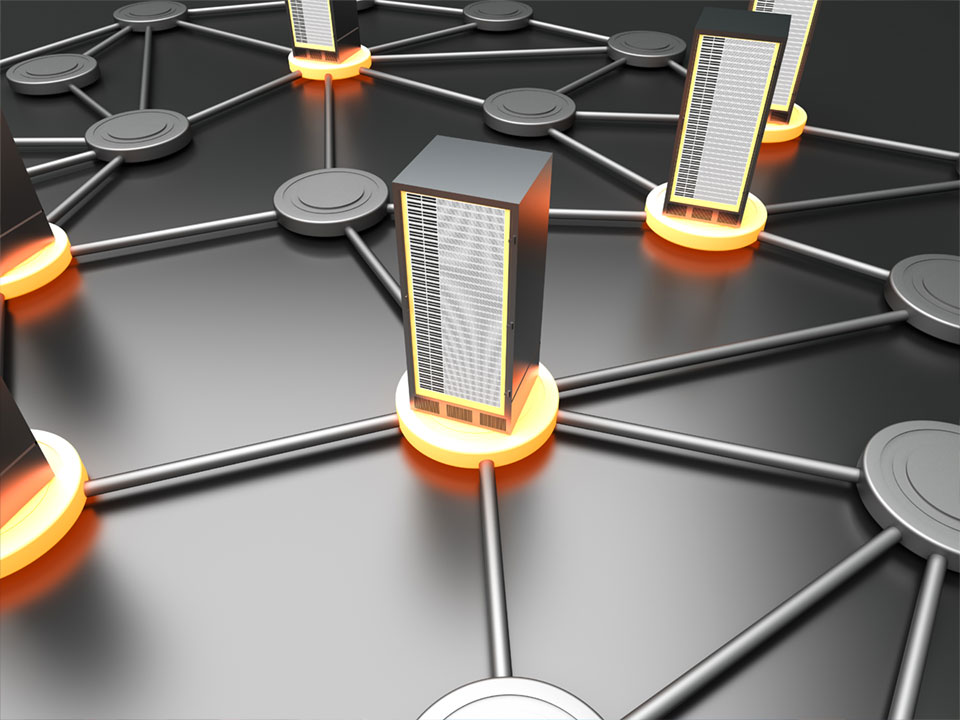
Edge Computing Zones
Since 5G network by design requires huge infrastructure costs due to characteristics of high-frequency waves, it is not an efficient medium to carry data over long distances. The cloud services, however, are usually accessed from data centers located far from the point of operation and can add latency due to distance and use of lower network bands. In order to tackle this challenge, the biggest cloud players and telecom operators are tying up to embed cloud services within the network of the carriers.
Technologies like Multi-access Edge Computing (MEC) bring storage and compute resources at the cellular base stations and provides the flexibility of hosting applications and processing content closer to the subscribers. This enables users to access cloud services within the vicinity of the stores and avoid latency issues from traditional cloud data center-based services.
The current state of technology:
- Platform-Carrier partnerships and product availability announced across AWS, Azure, and GCP.
- Azure Edge Zones provide Azure services on the telecom carrier platform, providing 5G connectivity services to host applications and solutions using standard Azure deployment models.
- AWS Wavelength brings AWS services to the edge of 5G network, minimizing the latency to connect to an application from a mobile device. Application traffic can reach application servers running in wavelength zones without leaving the mobile provider’s network.
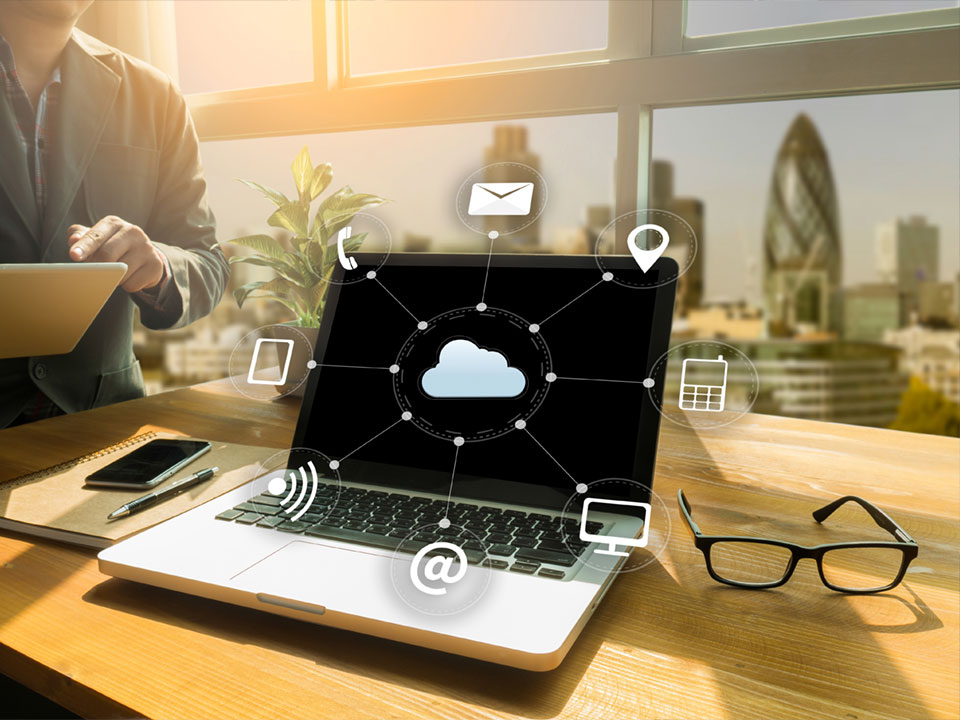
Disruptive Edge Services
With IoT/5G/Edge infrastructure in place, we need optimized AI/ML services for intelligent video analytics at the edge supporting deep learning algorithms and image recognition models with on-demand cognitive services, master catalog data, and customizations.
The current state of technology:
- Radisys provides low latency & bandwidth optimized Real-time Media processing & Edge Media AI Analytics using Open-source Akraino edge stack that leverages Intel’s Wind River Titanium cloud & Network Edge Virtualization (NEV) SDK targeted at MEC applications and services.
- NVIDIA Metropolis uses the low power of NVIDIA® Jetson™ in cameras and appliances at the edge, the massive compute of NVIDIA Tesla® servers in the cloud, and the NVIDIA DeepStream SDK powered by NVIDIA TensorRT™ to deliver a complete intelligent video analytics (IVA) solution.
Adoption Approach
Adoption Approach
More retailers are adopting cloud-based software and other relevant technologies such as RFID,
in-store Wi-Fi, and IoT, which will increasingly leverage 5G over the next two to three years.
The step is to evaluate the following:
- How is your device landscape today?
- Are you using high/low resolution cameras?
- How do you leverage 3G/4G IoT investments to take advantage of 5G and Edge?
- Will real-time analytics and insights help you improve business outcomes?
- Does your business use case demand Edge ML Computing?
- What is your coverage percentage between on-premise and cloud?
Innova Solutions specializes in designing solutions across new technology trends and can help you advance your
5G/Edge journey. Talk to us for a customized solution.
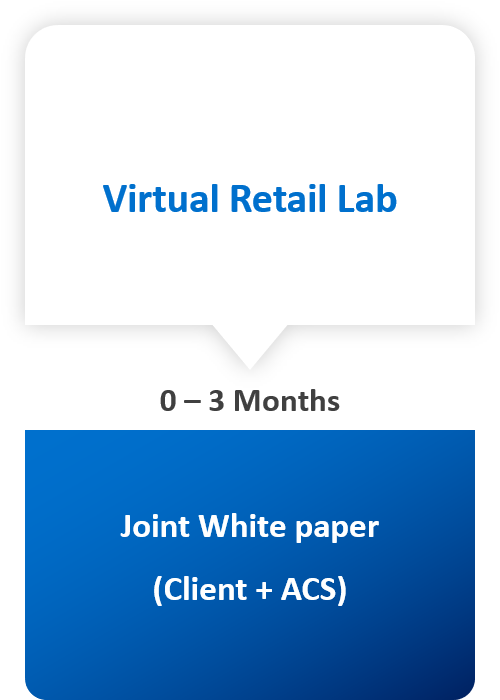
we set up a virtual lab with the client and conduct a thorough company and
market research to identify new opportunities that are critical for the business. At the end
of the virtual lab, the client can jointly publish a white paper with Innova Solutions and
create a roadmap for adoption.

we prioritize and shortlist the solutions and undertake a pilot to showcase
technology validation and product insights. This phase also leads to partnerships with
various technology and business players, depending on the project requirements.

we incorporate platform services and expand pilot zones to test market
sentiments and run product redesign cycles based on user interaction and feedback.

rollouts with the platform and product scaling. With this low risk, low-cost
approach, we help you adopt the new technology faster and derive real-world results.
Contributors




About Innova Solutions
Innova Solutions is a leading global information technology services and consulting organization with 30,000+ employees and has been serving businesses across industries since 1998. A trusted partner to both mid-market and Fortune 500 clients globally, Innova Solutions has been instrumental in each of their unique digital transformation journeys. Our extensive industry-specific expertise and passion for innovation have helped clients envision, build, scale, and run their businesses more efficiently.
We have a proven track record of developing large and complex software and technology solutions for Fortune 500 clients across industries such as Retail, Healthcare & Lifesciences, Manufacturing, Financial Services, Telecom and more. We enable our customers to achieve a digital competitive advantage through flexible and global delivery models, agile methodologies, and battle-proven frameworks. Headquartered in Duluth, GA, and with several locations across North and South America, Europe, and the Asia-Pacific regions, Innova Solutions specializes in 360-degree digital transformation and IT consulting services.
For more information, please reach us at – [email protected]



